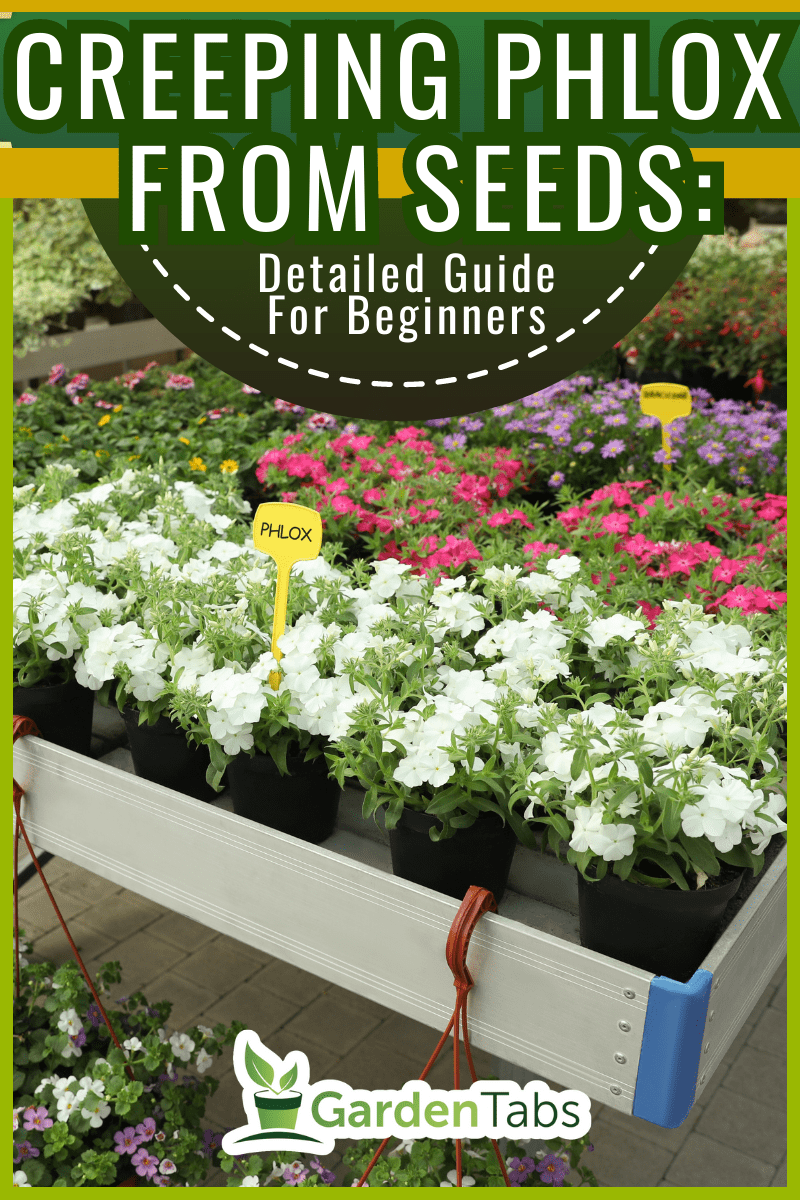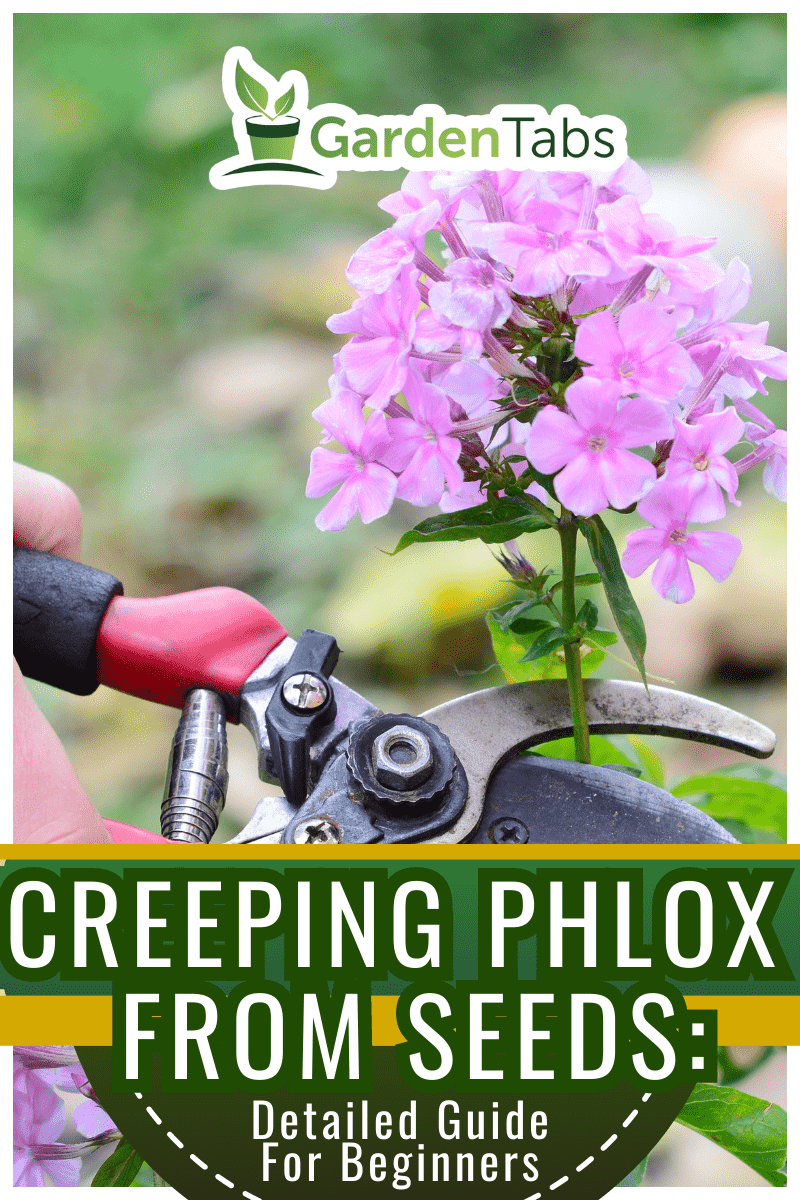Creeping phlox is a beautiful flowering plant that can be grown from seeds, making it an excellent option for beginners who want to start a garden.
This plant, also known as Phlox stolonifera, produces clusters of fragrant flowers in various colors, including pink, purple, white, and blue.
Creeping phlox is a hardy plant that can thrive in a variety of conditions, making it a wonderful option for gardeners of all skill levels.
If you're new to gardening and want to try growing creeping phlox from seeds, this detailed guide is for you.
In this article, we'll cover everything you need to know about growing creeping phlox, from selecting the right seeds to caring for your plants.
We'll also provide tips and tricks to help you get the best results, so you can enjoy a beautiful, thriving garden full of colorful creeping phlox.

Is Creeping Phlox Easy To Grow From Seed?
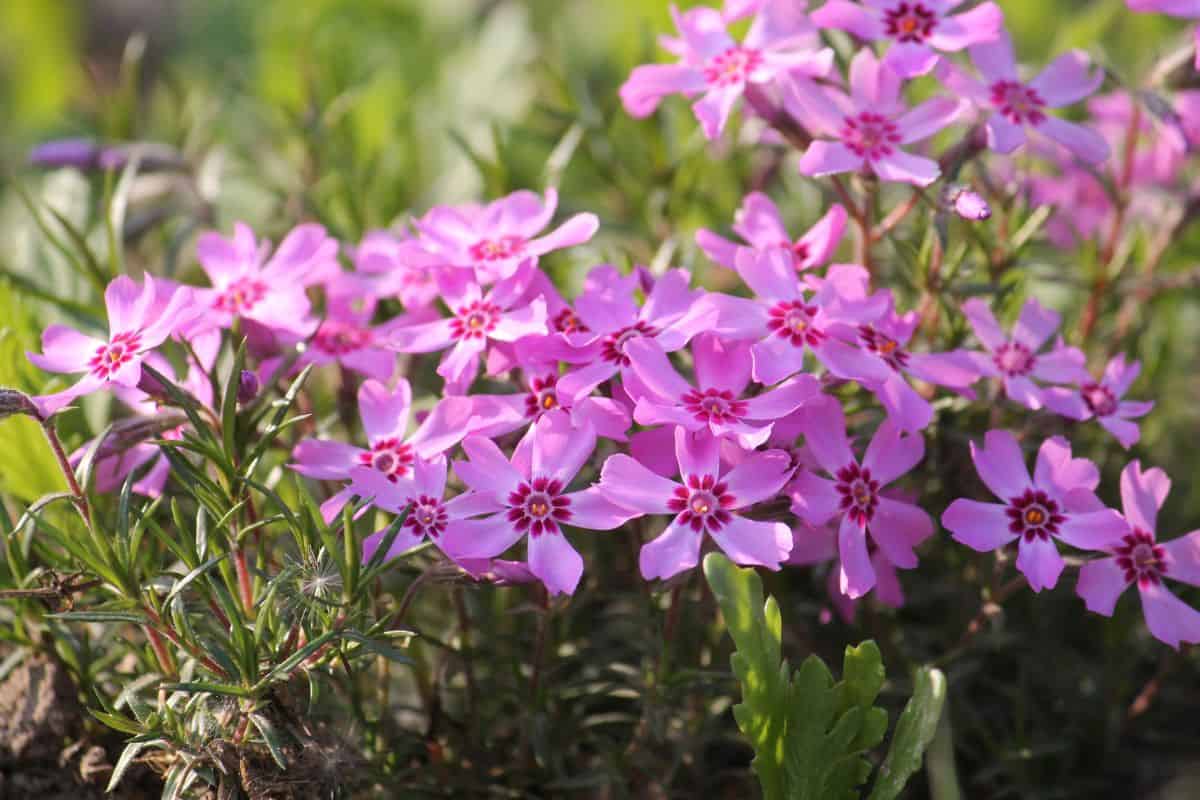
Creeping phlox is a beautiful, low-maintenance ground cover that can be grown from seed.
While it may take a bit of patience, you can easily grow creeping phlox from seeds. Nurturing the plant can be a rewarding experience for beginners.
Here are some factors to consider when growing creeping phlox from seed:
Seed Treatment
Creeping phlox seeds do not require any special treatment, making them easy to work with.
Planting Time
Creeping phlox seeds can be planted outdoors once the soil reaches a consistent temperature of 65°F to 70°F.
For indoor planting, start the seeds six to eight weeks prior to the last spring frost.
Soil
Creeping phlox can tolerate a wide range of soil types but prefers well-draining soil that is rich in organic matter.
A soil pH between 6 and 7 is ideal for creeping phlox.
Light and Water
Creeping phlox grows best in full sun to partial shade and requires regular watering until established.
When Should I Start Creeping Phlox Seeds?
If you're looking to grow creeping phlox from seeds, you will need to start the process at the right time ofyear.
The ideal time for planting creeping phlox seeds is in the early spring, typically between late March to early April, as this is when the soil temperature is at least 55°F.
This is a critical factor to keep in mind since creeping phlox seeds need warm soil to germinate and take root.
When the soil temperature reaches at least 55°F, the seeds will have the perfect growing conditions they need to thrive.
They will sprout relatively quickly, and once they emerge, you should see significant growth over the following weeks.
By planting your seeds during this period, you'll give your plants the best possible chance to establish themselves before the hot summer weather arrives.
If you start planting your creeping phlox seeds too early, you run the risk of exposing them to cold weather or frost, which can harm or even kill the delicate seedlings.
On the other hand, if you wait too long to plant them, you may miss the optimal temperature range for germination and risk a lower success rate.
How Quickly Will Creeping Phlox Grow From Seed?
If you are planning to grow creeping phlox from seed, you might be wondering how long it takes for the plant to grow to maturity.
Here is what you need to know:
Creeping phlox germinates quickly, and you will likely have sprouts within a month or two, depending on the variety.
Once the seeds have germinated, the plants will start to grow rapidly.
However, it takes approximately two years for creeping phlox to reach its full growth potential. During this time, the plant will grow about an inch per month, making it a fast-spreading ground cover.
If you want to speed up the growth of your creeping phlox, you can provide it with ideal growing conditions.
With the right care, your creeping phlox will grow quickly and provide you with beautiful ground cover for years to come.
How to Plant Creeping Phlox Seeds
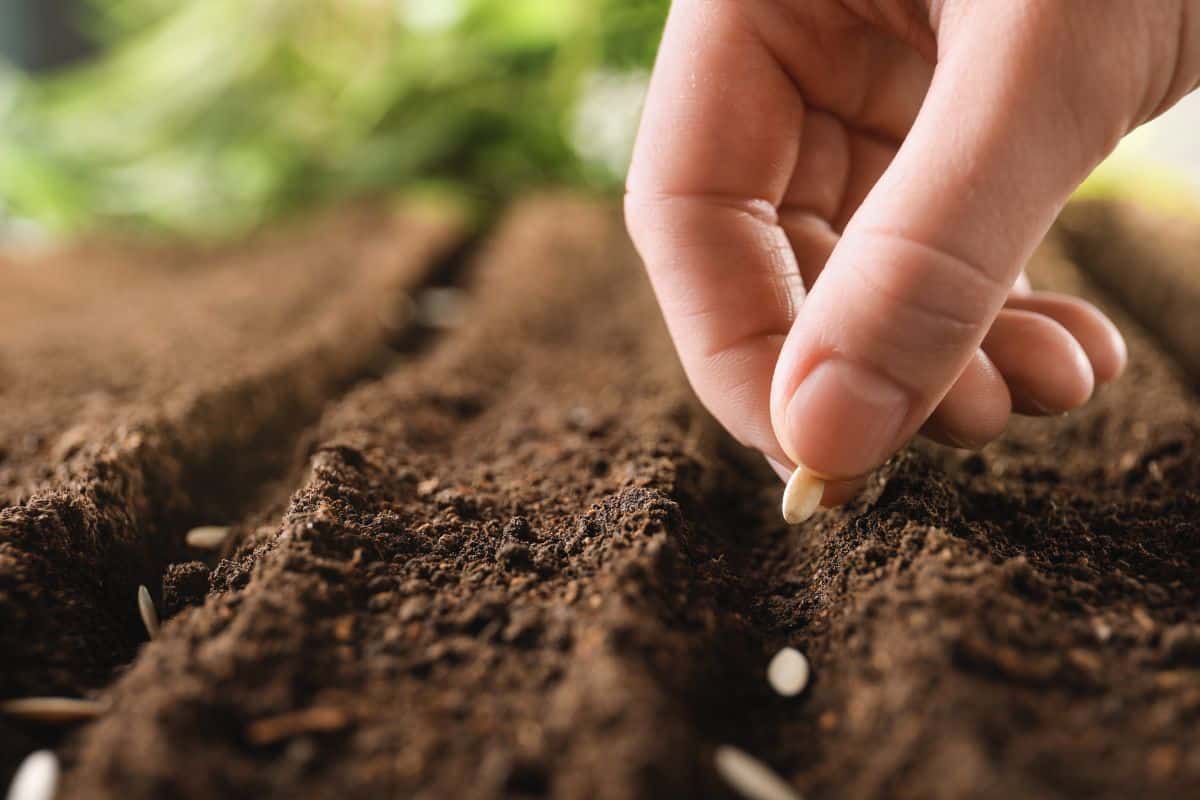
1. Preparing The Soil
The first step in planting creeping phlox seeds is to prepare the soil. Choose a location that receives partial to full sunlight and has well-draining soil.
Loosen the soil to a depth of about 12 inches and remove any rocks or debris.
Add a layer of compost or well-rotted manure to the soil to improve its fertility.
2. Sowing The Seeds
Once the soil is prepared, you can start sowing the seeds. Spread the seeds evenly over the soil surface, leaving about one inch of space between each seed.
Lightly cover the seeds with a thin layer of soil, about 1/8 inch deep. Water the soil gently to moisten it, but be careful not to wash away the seeds.
Alternatively, you can start the seeds indoors about six to eight weeks before the last frost date in your area.
Sow the seeds in seed-starting trays filled with well-draining soil. Keep the soil moist and warm, and germination should occur within seven to 14 days.
3. Watering and Fertilizing
After sowing the seeds, you need to water them regularly. Keep the soil moist but not waterlogged.
Once the seedlings emerge, you can reduce the watering frequency but make sure the soil does not dry out completely.
Apply a balanced fertilizer, such as a 10-10-10 or 20-20-20, once a month during the growing season to promote healthy growth and blooming.
Follow the instructions on the fertilizer package for the correct dosage and application method.
Caring for Creeping Phlox Seedlings

Watering
Watering is crucial when it comes to caring for creeping phlox seedlings.
These plants require consistent moisture to thrive, but it's important not to overwater them. Overwatering can lead to root rot and other issues.
Water your creeping phlox seedlings deeply once a week, or more frequently if the soil is dry to the touch.
Ensure that the soil is well-draining to prevent waterlogging.
Fertilizing
Creeping phlox seedlings require regular fertilization to promote healthy growth and vibrant blooms.
Fertilize your plants once a month during the growing season with a balanced, all-purpose fertilizer.
Try not to over-fertilize your phlox because this can cause excessive foliage growth and fewer blooms.
Pruning
Pruning can help you maintain the shape of your creeping phlox seedlings.
Once the blooms fade, trim back the stems by one-third to encourage a second wave of flowers.
Prune away any dead or diseased stems throughout the growing season to prevent the spread of pests and diseases.
Pest and Disease Control
Creeping phlox seedlings are susceptible to a range of pests and diseases, including spider mites, aphids, and powdery mildew.
Keep an eye out for any signs of infestation or infection, such as yellowing leaves or white powdery patches.
Treat infestations and infections promptly with an organic insecticide or fungicide. Regularly inspect your plants to catch any issues early on.
Transplanting Creeping Phlox Seedlings
Transplanting creeping phlox seedlings is a crucial step in the growth process that requires careful consideration.
The best time to transplant is in the early spring or fall. You will need to lift the plant up and find the area where you can dig up some roots.
Even though the little shoots look like roots, you have to get part of the root ball to ensure the plant can survive.
Once you have located the root ball area, you will want to start digging deep several inches around the plant.
Make sure to dig deep enough to get the entire root system. Then, gently lift the plant out of the ground and shake off any loose soil around the roots.
Be careful not to damage the roots during this process.
Before transplanting the creeping phlox seedlings, prepare the new planting hole by making it slightly wider than the existing roots.
Bury the roots under the soil and leave the foliage above the soil.
To make it easier for the new divisions to take root, dig up the soil and the bottom of the hole before planting, and provide water.
It is also important to keep the soil moist for the first few weeks after transplanting.
Transplanting Seedlings
When transplanting creeping phlox seedlings, you should make sure to space them properly.
The recommended spacing is around 15 to 18 inches between each plant.
Creeping phlox grows low to the ground and spreads out.
You should plant it in staggered rows and give each plant sufficient space to fill out and grow.
Growing Creeping Phlox from Seed: Closing Thoughts
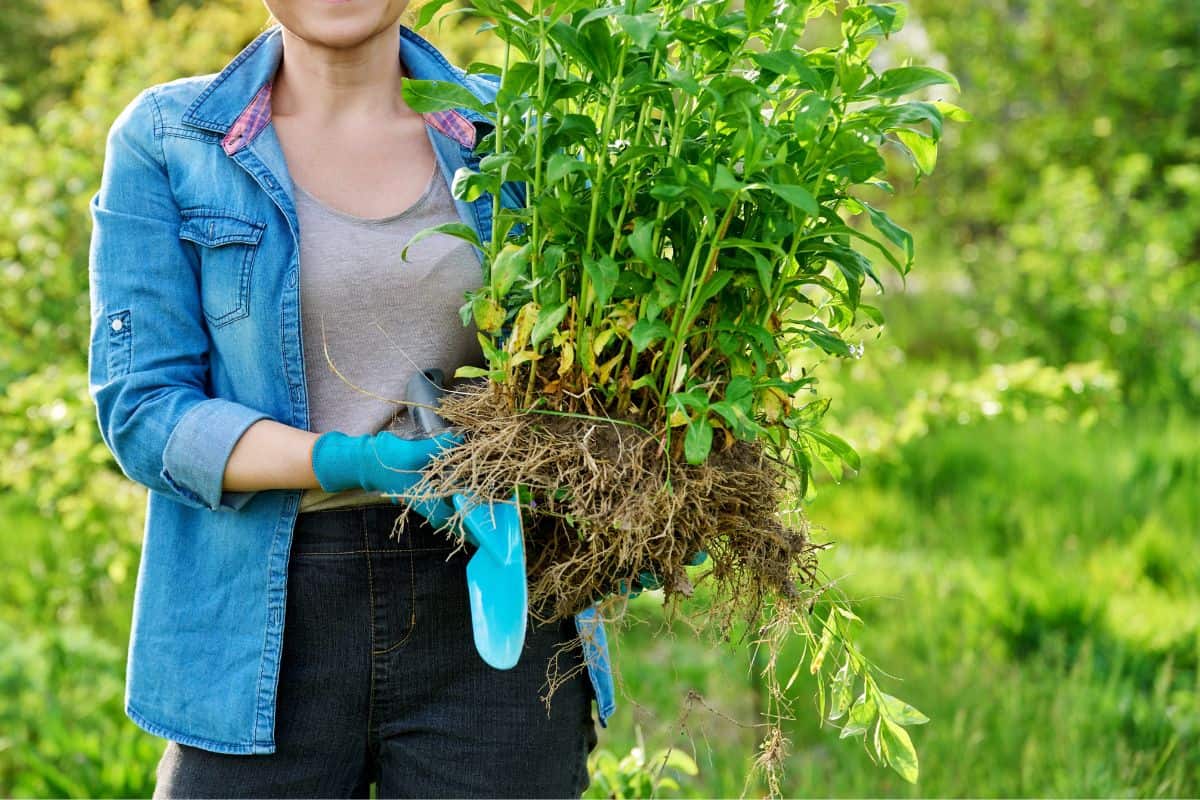
Creeping phlox is an easy-to-grow plant that requires minimal care and attention.
Remember to plant the seeds at the right depth and spacing, and provide them with adequate sunlight and water.
You should also harden off the seedlings before transplanting them to their permanent location.
Creeping phlox is a versatile plant that can be used in a variety of ways in your garden.
It can be grown as a ground cover, in rock gardens, or even in containers.
Its fragrant, five-petal flowers are a favorite of pollinators such as butterflies and bees.
Overall, growing creeping phlox from seed is a fun and easy way to add color and beauty to your garden.
With a little patience, the right conditions, and care, you can enjoy the stunning blooms of this lovely plant for years to come.
To explore a wider range of plants that are suitable for ground cover, kindly refer below:

